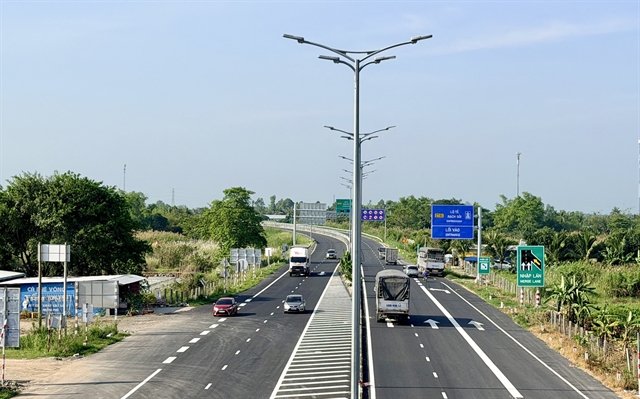 Society
Society

By Lê Việt Dũng
HÀ NỘI — In the mountainous commune of Hang Kia, Mai Châu District, Hòa Bình Province, Sùng Y Múa is working tirelessly to turn her homestay into a living museum of Mông culture.
She was once a midwife whose job was to help Mông women with home births (it was common for them to give birth at home then). The urge to "do something for the community" came when she saw Hang Kia being gripped by poverty and drug-related issues.
Múa's vision was translated into action in 2010 as she inaugurated a homestay for travellers seeking to immerse themselves in the daily life of Mông locals. The goal was clear: to improve the income of Mông people through cultural tourism.
"My first guests said lots of good things about the traditional Mông dishes in my homestay. As word spread, the place became more popular day by day," said Múa.
Thirteen years of hard work have paid off as her homestay now accommodates around 300 to 400 guests each month, creating jobs for about seven Mông women who earn between VNĐ3 million (US$124) to VNĐ7 million ($288) monthly.
The business also benefits local craftsmen, as guests often purchase their items as souvenirs when they visit their villages.
Y Múa Homestay also serves as a place for Mông teenagers to earn extra pocket money by running errands and performing traditional dances for guests after school.
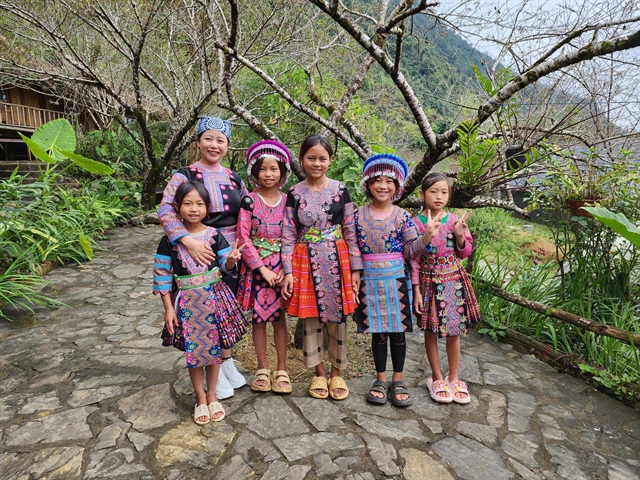 |
| Sùng Y Múa (second to left) and some Mông teenagers posing in front of the camera. — VNS Photos Lê Việt Dũng |
But Múa's dreams go far beyond that. She is working hard to transform her homestay into a cultural museum where every corner tells a story of the Mông people.
Walking into her homestay feels like stepping into a time capsule of Mông culture. Each room is adorned with artefacts and dresses made by artisans on-site. Visitors, rather than being mere lodgers, can try their hand at crafting to enjoy hands-on experiences.
"We offer guests hands-on experiences in various activities, including applying wax to fabric, dyeing textiles, pounding Giày cakes, and drying tea leaves on a hot pan," said Múa.
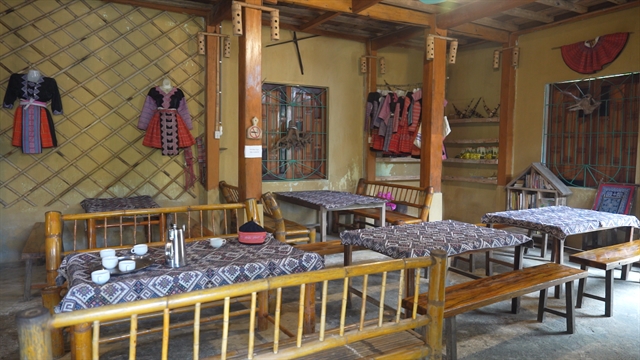 |
| A room in Y Múa Homestay which is decorated with Mông artifacts and dresses. |
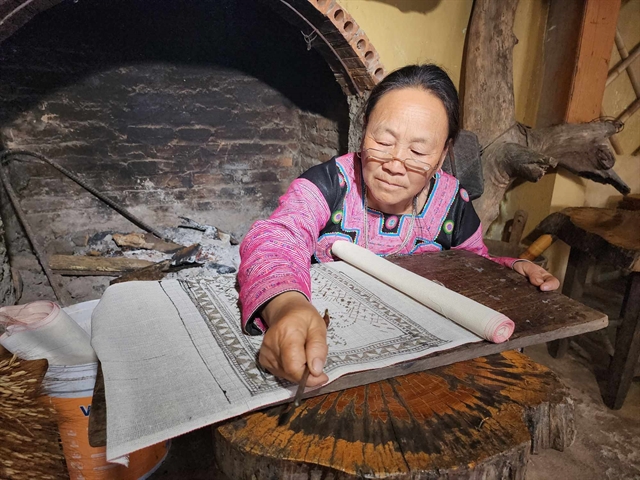 |
| Múa's mother-in-law, an on-site artisan, decorating fabric by applying hot wax to it. |
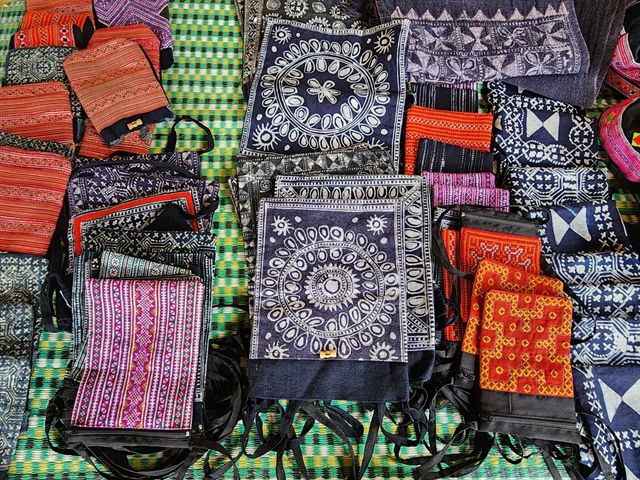 |
| Fabrics made by on-site artisans available for sale in the homestay. |
The host also shares her plan to build a house in which all the things Mông people use in their daily lives are displayed, from a corn liquor still to a wooden loom. A section of the house will be dedicated to a forge, where visitors can witness the skills that go into creating tools for everyday use.
"It's not just about providing a place for guests to stay; it's about creating opportunities for the locals to thrive and preserving the cultural richness of the Mông people," said Múa.
About 100km away from Sùng Y Múa Homestay is another homestay in Vân Sơn Commune, Tân Lạc District, Hòa Bình Province, owned by Hà Thị Biêu who shares the same vision as Y Múa.
Biêu was a Mường farmer growing rice and corn, but could barely make ends meet. She took out preferential loans under the AOP (Action on Poverty) Programme to build her homestay in 2019. For four years, the homestay has been a must-go destination for culinary travellers seeking a taste of traditional Mường dishes.
"There are six groups providing tourism services to travellers in the commune. My homestay belongs to the group in charge of catering," said Biêu.
Guests in the homestay can use bicycles to reach nearby Mường villages, where they can step into their vibrant tapestry of daily life, participate in their cultural performances, and visit orange orchards grown by Mường locals.
In the footsteps of the cultural steward Sùng Y Múa, Biêu also has a plan to build a house exhibiting Mường traditional musical instruments and tools, including those that have been passed down to her for generations.
The goal of her business is to "improve the income of local people through tourism and engage tourists with the cultural heritage that permeates the region."
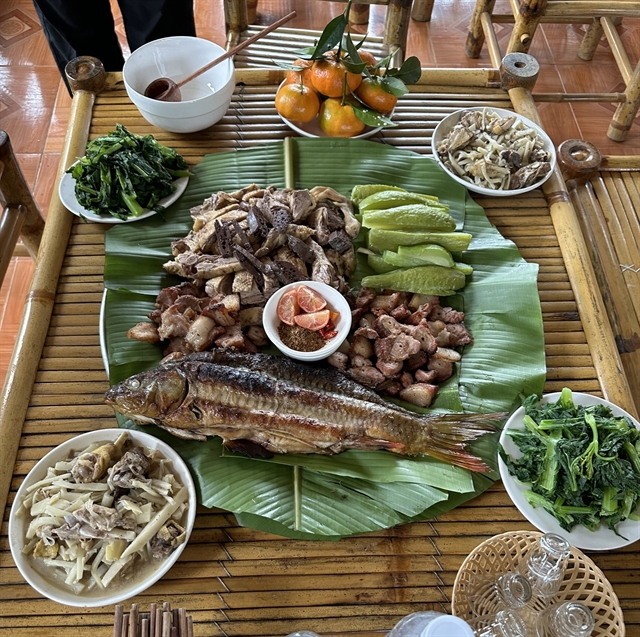 |
| Some Mường foods being served to guests in the homestay. |
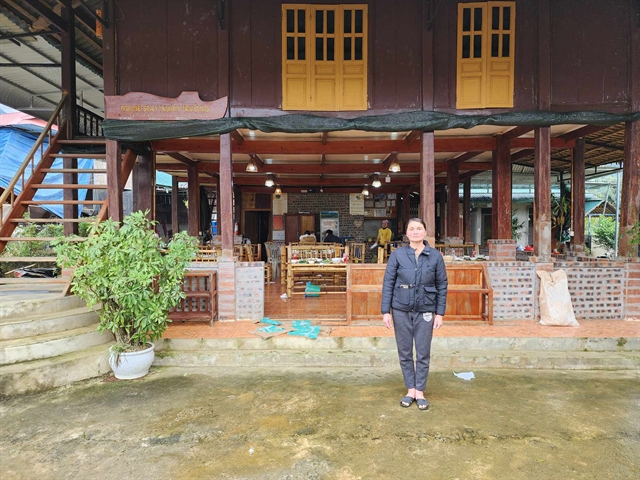 |
| Hà Thị Biêu standing in front of her homestay, which resembles a Mường "nhà sàn" (house on stilts). |
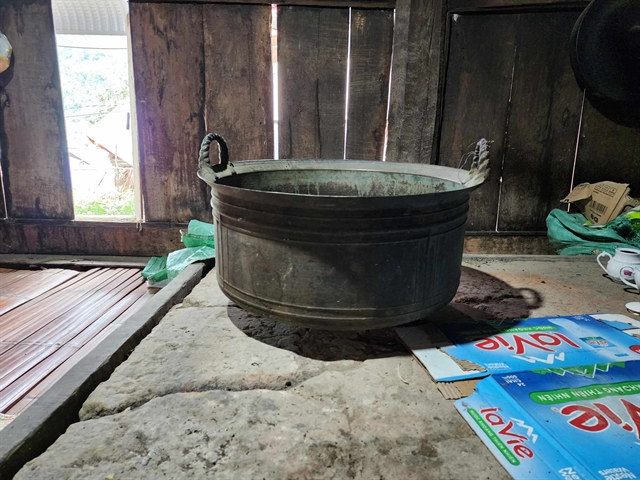 |
| A Mường brass cauldron that Biêu's family has kept for generations. |